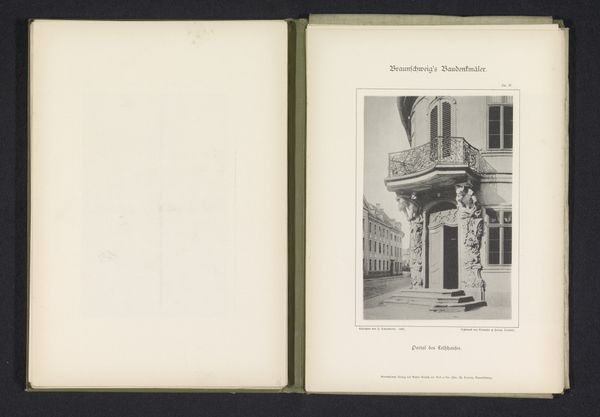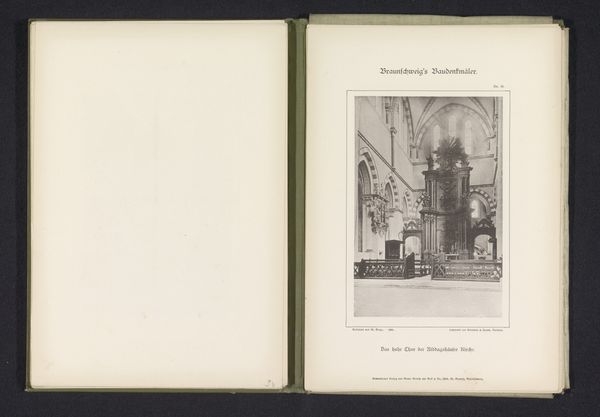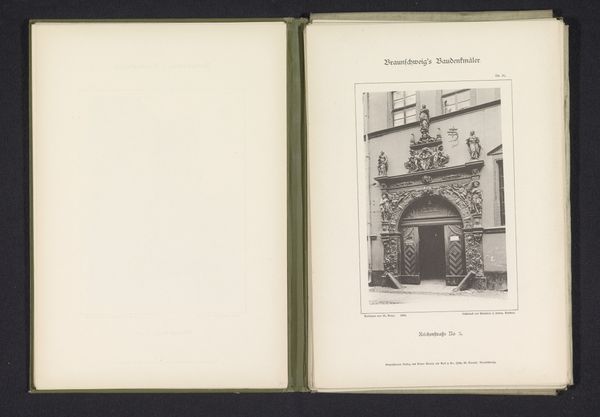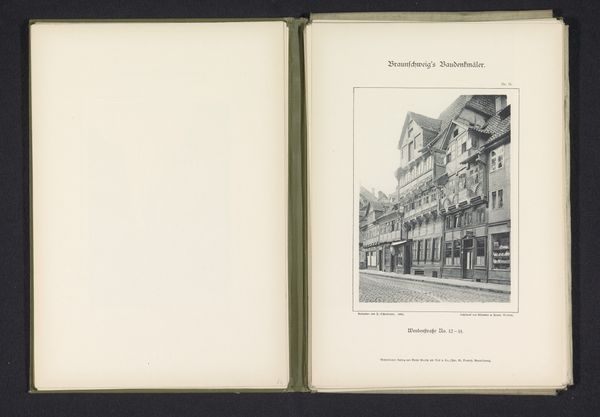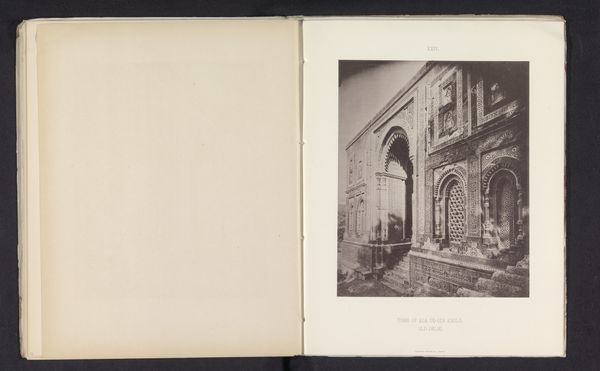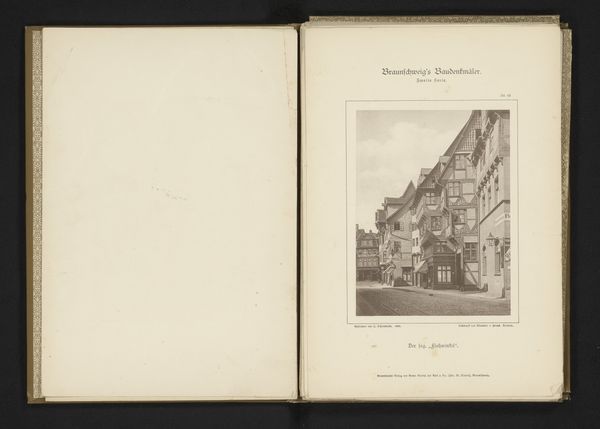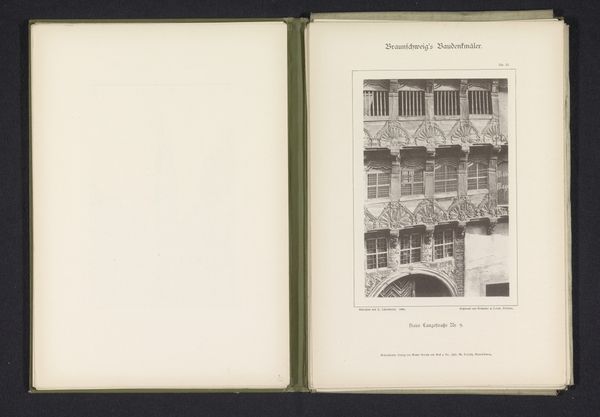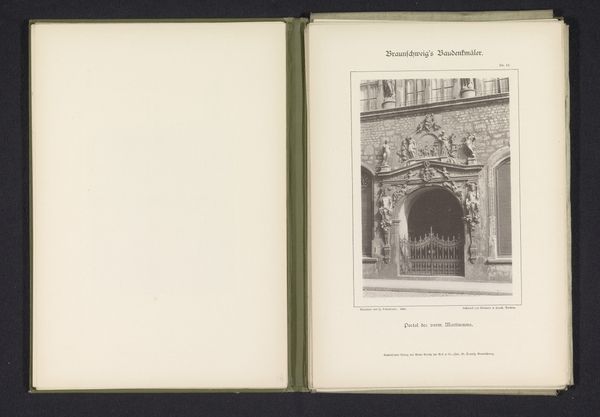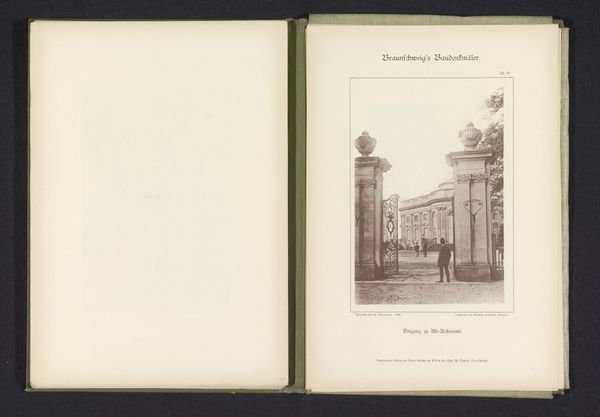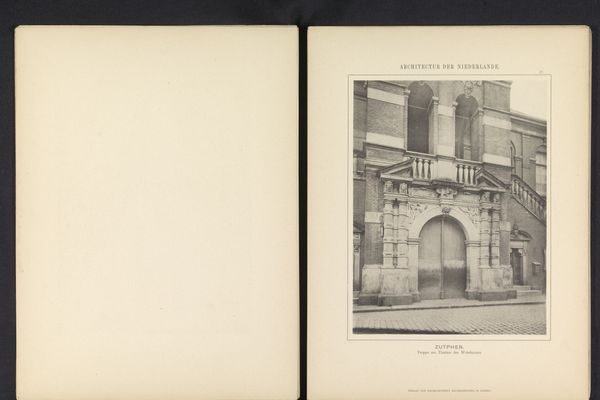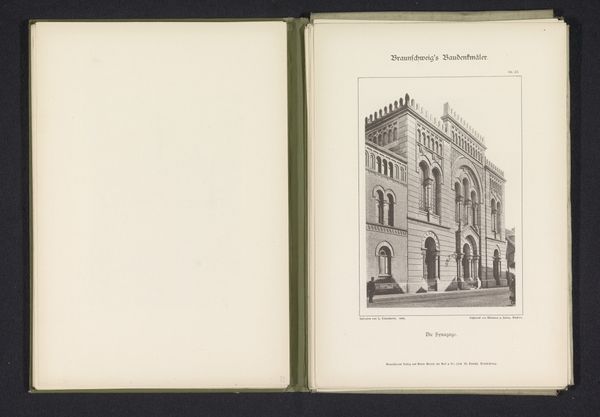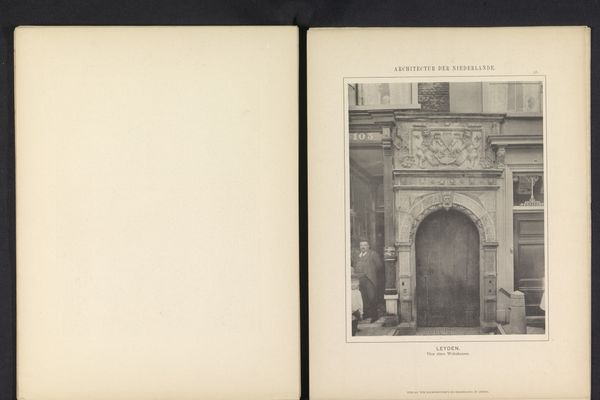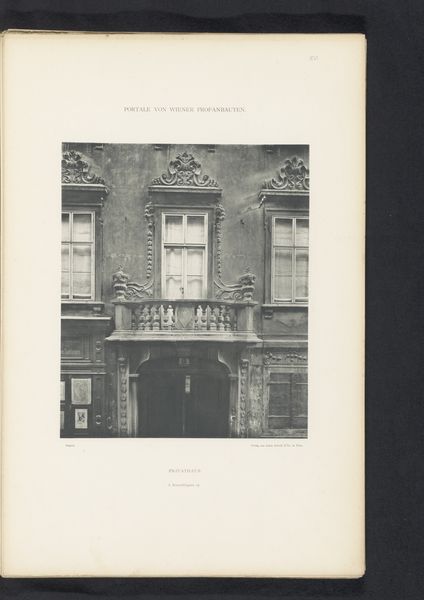
print, photography
# print
#
photography
#
cityscape
#
building
Dimensions: height 161 mm, width 111 mm
Copyright: Rijks Museum: Open Domain
This photograph by J. Schombardt captures the entrance portal of a building in Braunschweig, Germany. The photograph is itself an artifact, an early form of mechanically reproduced image. It shows a facade constructed from load-bearing stone. The portal is flanked by engaged columns, and the voussoirs of the arched opening are heavily rusticated. A relief sculpture sits atop the entablature, adding further visual weight. Each of these elements would have been produced by teams of quarrymen and stone carvers, highly skilled laborers working in concert to realize an architect's vision. While the photograph flattens the experience, the architectural details speak to the enduring nature of stone. The portal embodies values of permanence and stability, ideas that also resonate with institutions like banks and government buildings. By considering the labor and material qualities of this entrance, we can appreciate how architecture conveys meaning and reinforces social structures.
Comments
No comments
Be the first to comment and join the conversation on the ultimate creative platform.
